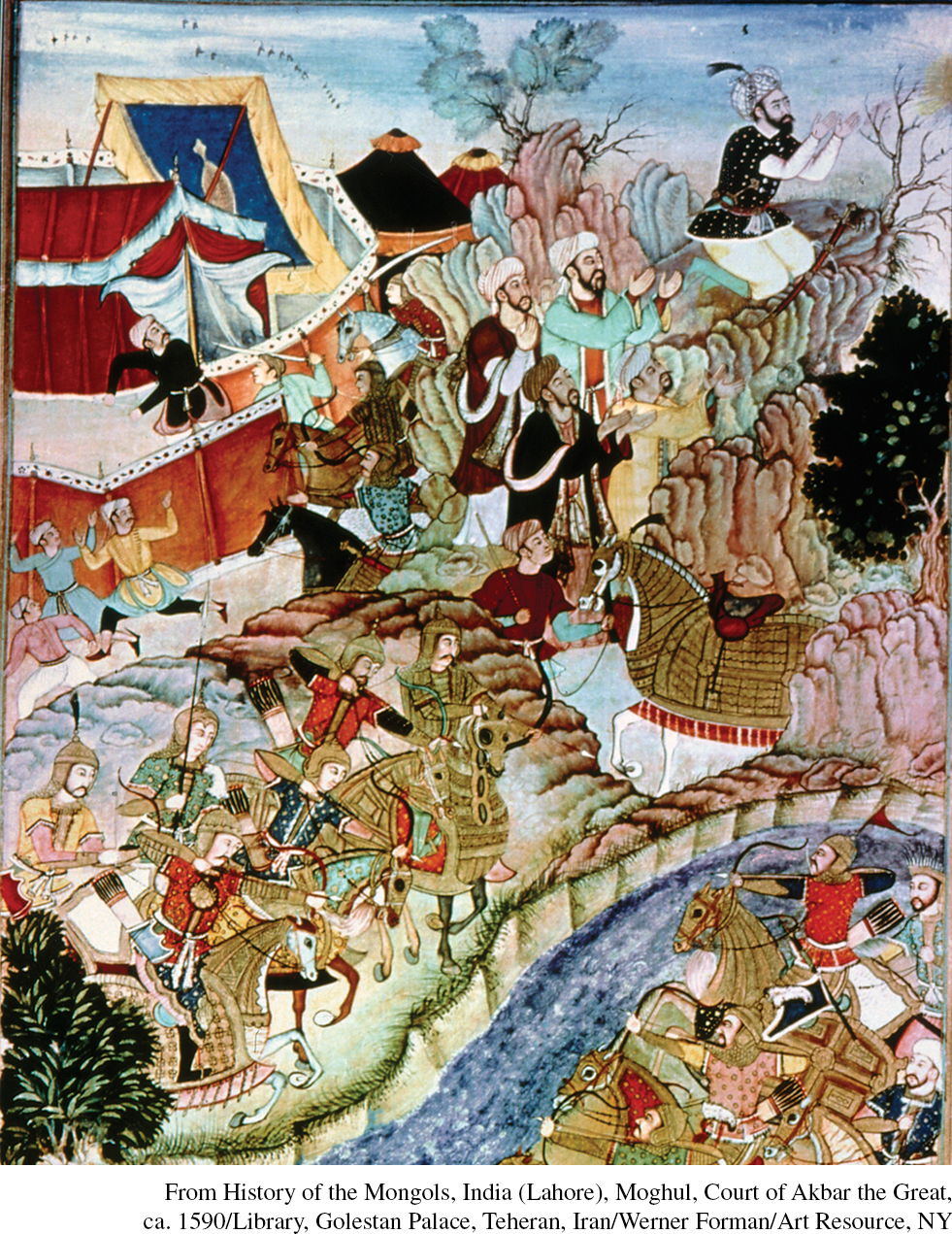Introduction to Chapter 11
CHAPTER 11
Pastoral Peoples on the Global Stage
The Mongol Moment
1200–

LookingBack and Looking Around: The Long History of Pastoral Peoples
The World of Pastoral Societies
Before the Mongols: Pastoralists in History
Breakout: The Mongol Empire
From Temujin to Chinggis Khan: The Rise of the Mongol Empire
Explaining the Mongol Moment
Encountering the Mongols: Comparing Three Cases
China and the Mongols
Persia and the Mongols
Russia and the Mongols
The Mongol Empire as a Eurasian Network
Toward a World Economy
Diplomacy on a Eurasian Scale
Cultural Exchange in the Mongol Realm
The Plague: An Afro-Eurasian Pandemic
Reflections: Changing Images of Pastoral Peoples
Zooming In: A Mongol Failure: The Invasion of Japan
Zooming In: Khutulun, a Mongol Wrestler Princess
Working with Evidence: Perspectives on the Mongols
In late 2012, the Central Asian nation of Mongolia celebrated a “Day of Mongolian Pride,” marking the birth of the country’s epic hero Chinggis Khan 850 years earlier. Officials laid wreaths at a giant monument to the warrior leader; wrestlers and archers tested their skills in competition; dancers performed; over 100 scholars made presentations; traditional costumes abounded. In central London, no less, a large bronze statue of Mongolia’s founder was unveiled for the occasion. For this small and somewhat remote country, seeking to navigate between its two giant neighbors, China and Russia, it was an occasion to express its own distinctive identity. And Chinggis Khan is central to that identity. With his bloody conquests played down, Chinggis Khan is celebrated as a unifier of the Mongolian peoples, the creator of an empire tolerant of various faiths, and a promoter of economic and cultural ties among distant peoples.
The 2012 celebrations marked a shift in Mongolian thinking about Chinggis Khan that has been under way since the 1990s. Under the country’s earlier Soviet-
All of this is a reminder of the enormous and surprising role that the Mongols played in the Eurasian world of the thirteenth and fourteenth centuries and of the continuing echoes of that long-
| A MAP OF TIME | |
|---|---|
| ca. 4000 B.C.E. | Beginning of pastoral economies |
| ca. 1000 B.C.E. | Beginning of horseback riding |
| ca. 200 B.C.E.–200 C.E. | Xiongnu Empire |
| 6th– |
Various Turkic empires |
| 7th– |
Arab Empire |
| 10th– |
Conversion of Turkic peoples to Islam |
| 11th– |
Almoravid Empire |
| 1162– |
Life of Temujin (Chinggis Khan) |
| 1209– |
Mongol rule in China |
| 1237– |
Mongol rule in Russia |
| 1241– |
Mongol attacks on Eastern Europe |
| 1258 | Mongol seizure of Baghdad |
| 1274, 1281 | Failed Mongol attacks on Japan |
| 1295 | Mongol ruler of Persia converts to Islam |
| 1348– |
High point of Black Death in Europe |
SEEKING THE MAIN POINT
What has been the role in world history of pastoral peoples in general and the Mongols in particular?